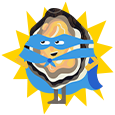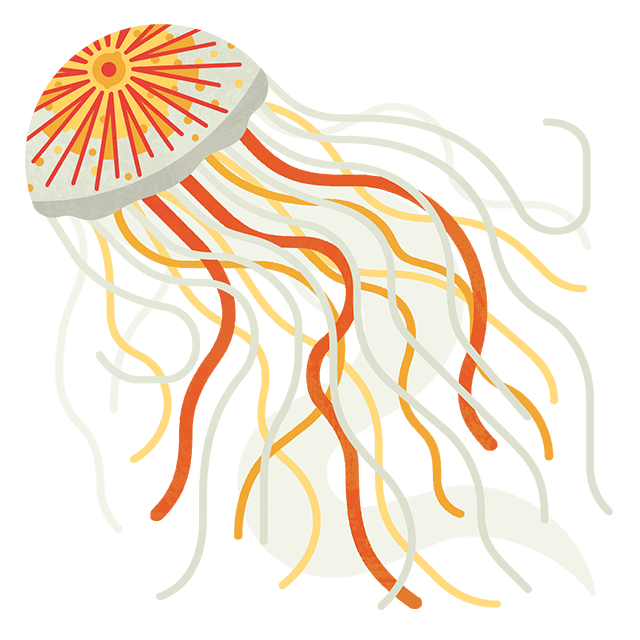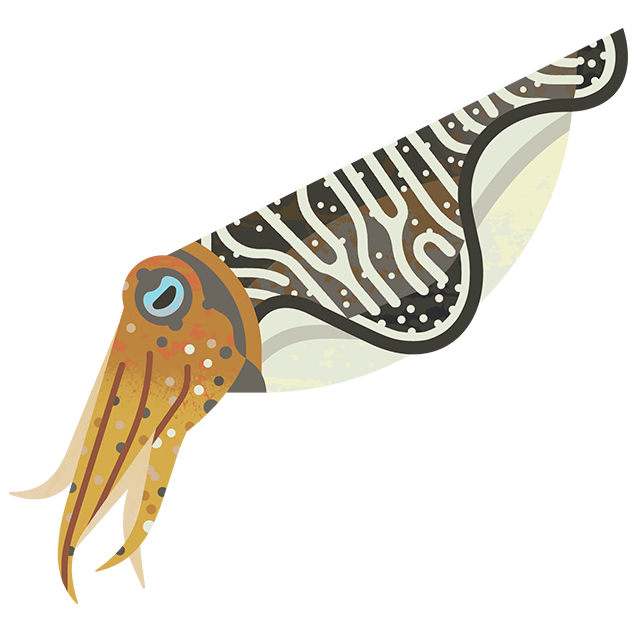
5 original Pokemon based on marine animals
Did you know that a lot of Pokémon get their inspiration from real-life animals? Many of these inspirations can be found in the ocean.
As of the beginning of 2024, there are 1,025 Pokémon - many of them based on real-life animals, found both on land and in our seas. This has been true ever since 1996, when the original 151 fictional species of monsters were introduced in the first Pokémon video game. We're highlighting five that are based on marine animals.
Seel - Harp Seal
As its name suggests, Seel is a type of seal. Due to its white fur and affinity to being able to use ice moves, the most likely marine animal to credit for its design is a harp seal, more commonly known as the Greenland seal.
Though adult harp seals are silver-grey in colour, their pups are born with soft white fur to help keep them warm. They share the Pokémon's pure black eye colour and are found in Northern cold climates such as the Arctic Ocean and some parts of the Atlantic Ocean. Harp seals very rarely visit UK seas but have occasionally been spotted around areas like the Shetland Islands and the East coast.
Seel also appears to be a 'true' seal, which means they are earless (they have no external ear flaps) and have small flippers. This is unlike sea lions, which are also a type of pinniped (a fin-footed marine mammal) but have external ear flaps and large and elongated front flippers.
Check out the differences between seals and sea lions
Seel's design is also inspired by other arctic marine animals, too. Its white, bulky body shape is similar to a Beluga whale's, and its tusks may be based on a walrus' - although Seel's sprout from its lower jaw rather than the top like a walrus' does.
Seel's distinct horn might also be a subtle reference to the unicorn of the sea: the narwhal.
Tentacool - Box Jellyfish
Although it's clear that Pokémon's Tentacool is based on a jellyfish, determining which kind of jellyfish held the most influence on its design is debatable. The most likely inspiration for this pocket monster, however, is the box jellyfish.
Tentacool's shape reflects the box-like bell of box jellyfish and its pale blue colour gives us a direct clue to its creative origin: the Australian box jellyfish or Sea Wasp. This type of box jellyfish also has a pale blue bell-shaped head with faint markings and is almost transparent when floating in the ocean - similar to Tentacool's 'clear body' passive effect ability.
Tentacool’s name may also reference a Class of comb jellies called Tentaculata, which have a pair of long tentacles used for capturing small prey. These comb jellies can be found floating in the Atlantic, Pacific and other tropical waters.
Cloyster - Regal Thorny Oyster
Despite its more aggressive appearance to its predecessor, even Shellder's evolved form, Cloyster, takes inspiration from real-world marine creatures.
Known as the bivalve Pokémon, Cloyster is based on a type of marine mollusc called a bivalve. These marine animals are enclosed by a shell consisting of two hinged parts, like clams, mussels and oysters. Bivalves are primarily filter feeders, meaning they're essential for cleaning the ocean.
Check out our work restoring oysters back to UK sea beds
Despite its name being a combination of 'clam' and 'oyster', it's likely that Cloyster's sharp exterior is based on neither! Rather, they're inspired by a Genus of the scallop family named Spondylus, which are known as thorny or spiny oysters (although are not true oysters).
The most likely Spondylus that Cloyster's sharp, spiky shell is based on is the regal thorny oyster (Spondylus regius). These are found in the Western Pacific and most significantly, seas around Japan - where Pokémon was created.
Although Spondylus are only found in tropical and subtropical seas, Cloyster is a dual-type Water/Ice Pokémon. This may be referencing other oysters, such as the European flat oyster, that thrive in colder water. It could also be a reference to the Pacific oyster, which is very resistant to cold and can withstand temperatures as low as -1.8°C.
Finally, Cloyster has a large black pearl within its shell, which is like the grey or black pearls produced by the black-lip pearl oyster. Due to its high quality and demand in jewellery, the black-lip pearl oyster is commonly farmed and harvested via aquaculture.
Seadra - Spiny Sea Horse
Seadra shares the same inspiration as its evolutionary predecessor, Horsea. While they do not directly correspond to a specific species found in the real world, both their designs are inspired by seahorses. Most significantly, their iconic horse-like heads which they get their name from, as well as their elongated bodies and prehensile tails, which can grasp and hold objects.
While Horsea has a smaller nose and no 'mane' (like the short-snouted seahorse), Seadra has a similar appearance to the spiny or long-snouted seahorse, both of which can found around the UK's coast.
Seadra has a much longer snout than Horsea and has spikes or spines running down the back of its head, on its pectoral and dorsal fins and on its crown. This is like the spiny seahorse, which has spines on its forehead, nose, the base of its cheeks, and above its eyes, as well as its dorsal fins. The spiny seahorse also has a longer snout than most other seahorse species, matching Seadra's.
As well as seahorses, Seadra's name also pays homage to another species of the Syngnathidae family: Seadragons. Seadragons also have horse-like heads, but swim more horizontally, are covered in leaf-like appendages to mimic drifting seaweed and do not have prehensile tails to anchor themselves to seagrass or seaweed like seahorses do. This confusion is reflected in Seadra's water-only element type while being categorised as the dragon Pokémon in Pokédex.
Seadra's spiky, poisonous fins may also have been inspired by lionfish, and its ink-shooting ability by squids, octopus and cuttlefish.
Kingler - Red King Crab
Its body shape and pronounced pincers clearly mark the water-type Kingler as a crab. Its overall design is reminiscent of the Tasmanian giant crab - one of the largest crabs in the world.
However, Kingler has fewer legs than a typical crab, suggesting it may be a species of false crab, or non-crab crustacean that has evolved a crab-like body which is known as carcinisation.
Its name suggests the most-likely inspiration is the king crab. This can be seen through Kingler's natural crown of spikes upon its head, giving it the air of a 'king'. Its reddish-orange carapace also suggests that Kingler is likely based on the Red King crab - the largest species of king crab discovered so far. Male king crabs are also one species of crab which are known to have asymmetric claws, similar to Kingler.
Kingler has also been described as using its huge claw to communicate with others which makes its natural behaviour like that of male fiddler crabs who use their big claw to advertise (a form of communication) to females. The reference to fiddler crabs is also used in the Pokemon’s name. 'Kingler' is a mixture of the words 'king' and 'fiddler'.
The difference between Pokémon and real marine animals
These are just a small range of the rich and diverse marine species that have influenced the vast and complex Pokémon world. Though these Pokémon may be fictional, the animals that inspired them are very real, as is the environment that they live in.
However, unlike Kanto where the 1st Pokemon game is set, real marine life is unfortunately being affected by ocean challenges including climate change, plastic pollution and overfishing. If left unchecked, it may mean that these well-known Pokémon will begin to represent marine animals that have slowly gone extinct.
Find out how your membership can help protect our ocean today.




